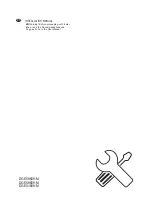
Grain Glossary
Rice
is a staple food in many countries. Although long-grain rice is
consumed more than any other rice around the world, it is inferior to brown
rice in both taste and nutrition. Brown rice is not only more complete
nutritionally, it has a wonderful nutty aroma and flavor.
Polished rice
(white) has been bleached, cleaned, pearled (polished with
talc), then often oiled and coated. This refining process causes the loss of its
hull, bran and germ, which are removed from the grain (along with most of
its nutrients) leaving only the starchy endosperm. As white rice is rather bland
when eaten by itself, it is usually served under steamed or sauteed
vegetables and topped with a flavorful sauce, such as curry or peanut.
Long grain brown rice
contains fiber and the nutrient-rich bran and germ,
as well as the starchy endosperm. In addition to being more flavorful, brown
rice digests more slowly, which provides energy over a longer period of time.
Brown rice is a satisfying meal companion and can even serve as the main
focus for a meal. While not as high in protein as wheat and some other grains
(10 percent), the high quality protein in brown rice is easily utilized by the
body. Brown rice is also a good source of the B vitamins and serval minerals,
including magnesium, potassium, zinc, iron, and selenium.
Wheat berries
are simply the wheat kernel with the hull removed. They can
be prepared as you would brown rice, though soaking overnight will speed
up cooking time. Their mild and pleasant flavor lends itself well to warm
dishes as well as cold salads.
Barley
has a chewy, hearty texture and is delicious combined with long or
short grain brown rice. A versatile grain with a pasta-like consistency, barley
is frequently used in soups. Barley contains 10 to 15 percent protein, is a
good source of many B vitamins and contains healthy amounts of
magnesium, calcium, iron and potassium.
Oats,
in the old-fashioned rolled style, make a stick-to-your-ribs meal any
time of the day. Add cinnamon and apple pieces or dried fruit before cooking
for ready-to-eat convenience. Oats are about 10 to 15 percent protein and
provide cholesterol-lowering fiber along with B vitamins. Because quick oats
have been partially processed, resulting in a loss of nutrients, try to use old-
fashioned rolled or steel-cut oats whenever possible.
Quinoa,
one of the ancient “super grains,’’ is petite in size and delicate in
texture. Quinoa has one of the highest protein contents of any grain, and is
also high in iron and calcium. Quinoa is a great companion grain in
combination dishes and its quick cooking time makes it a convenient
substitute for rice in your meals.
Millet
is another grain that complements a group of grains used together. Its
flavor is light and the color is sunny yellow. Millet contains 15 percent protein
and is high in fiber, iron, magnesium and potassium. For those with gluten
sensitivity, millet is considered to be one of the most digestible grains.
6
6. Plug the Automatic Rice Cooker into a 120V AC
electrical outlet.
Lift the Rice Cooking Switch and the “COOK” Light will
illuminate. The cooking process begins as soon as the
Light illuminates.
7. When the Automatic Rice Cooker is done cooking,
the “WARM” Light will illuminate.
For best results, let the cooked rice sit for 15 minutes
before stirring or removing. This allows the steam to finish
the cooking process.
8. Mix the rice.
After rice has steamed for 15 minutes, carefully open the
Lid as steam will escape. Use the Ladle provided or any
other non-metal long-handle utensil to scoop and mix the
rice well. Allow all steam to escape.
9. Keep Warm.
When the cooking is completed, the Automatic Rice
Cooker will automatically go into the “WARM” mode. At this
time, the “WARM” Light will illuminate.
NOTE: Do not warm rice for more than 12 hours.
It is recommended to consume the rice within a
twelve hour period.
If the “WARM” mode is not desired, simply unplug the
Automatic Rice Cooker from the wall. Do not touch the
Heating Body or Inner Pot until they have cooled
completely.
10.
Allow the Automatic Rice Cooker to cool completely before
cleaning.
11.
When the Automatic Rice Cooker is not being used, please
keep it unplugged.
Instructions for Use
(continued)
9


































